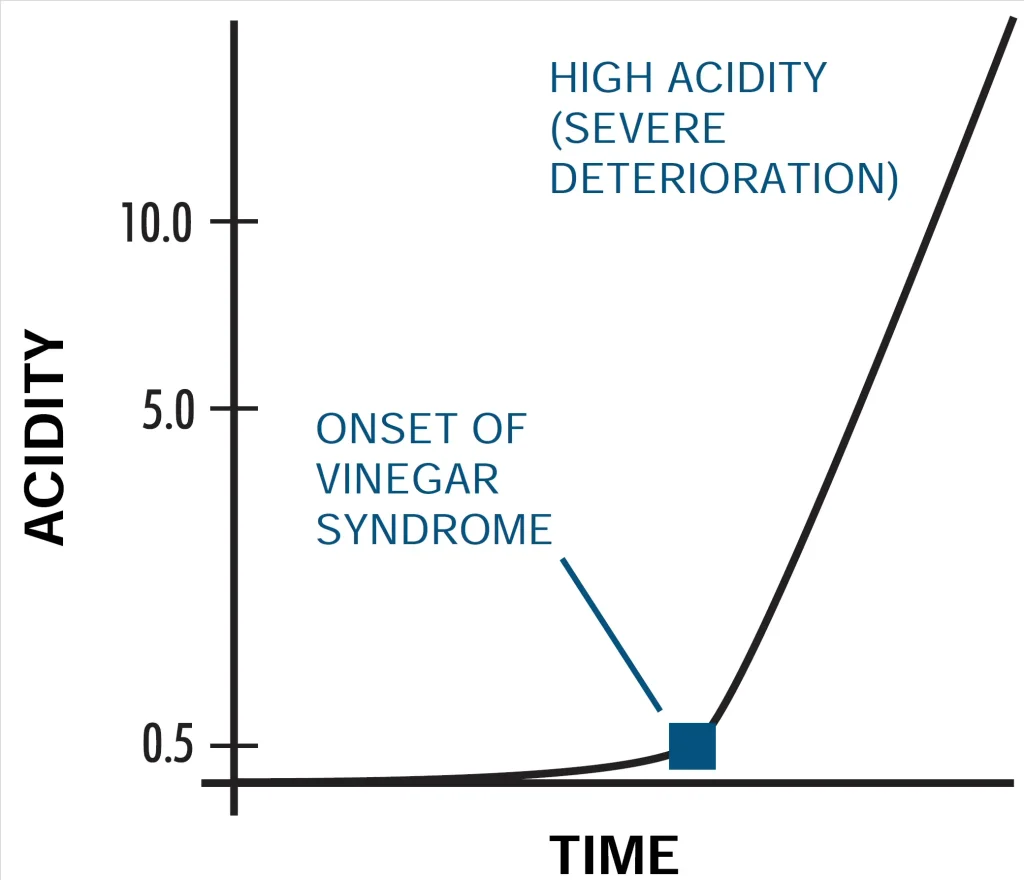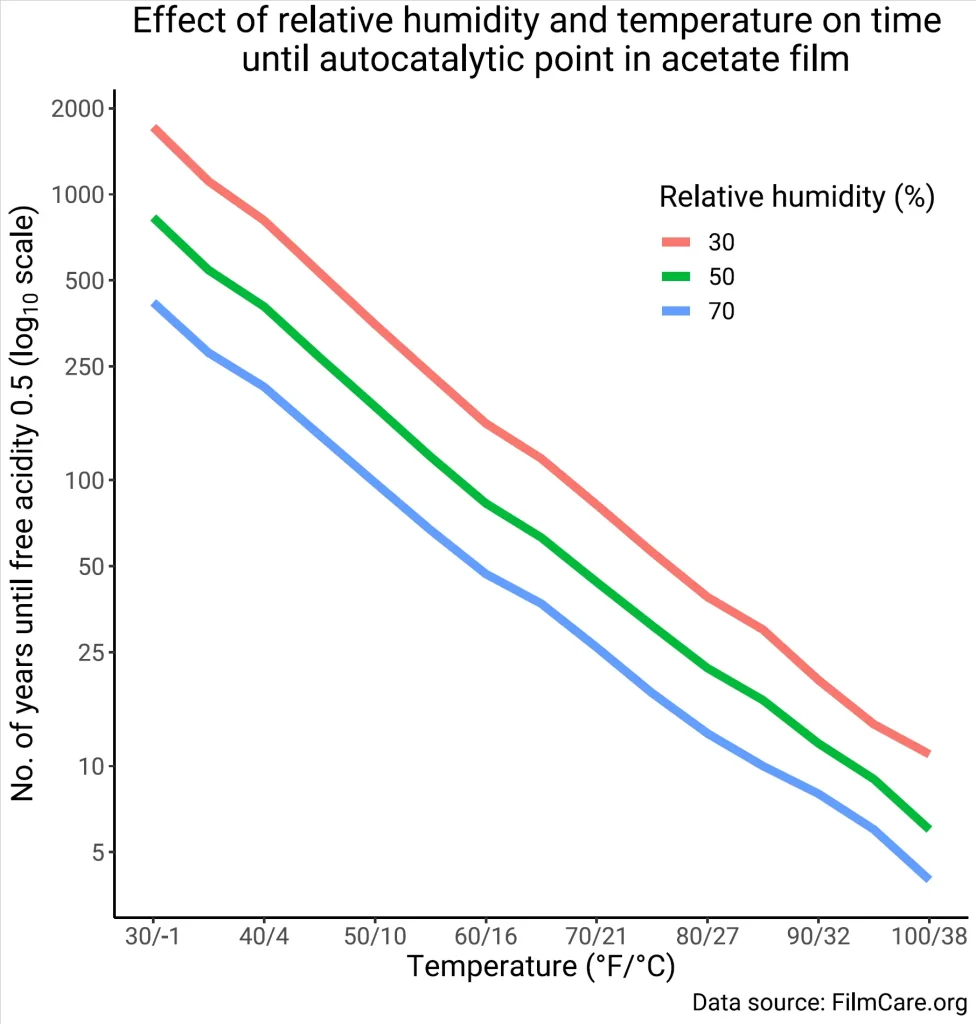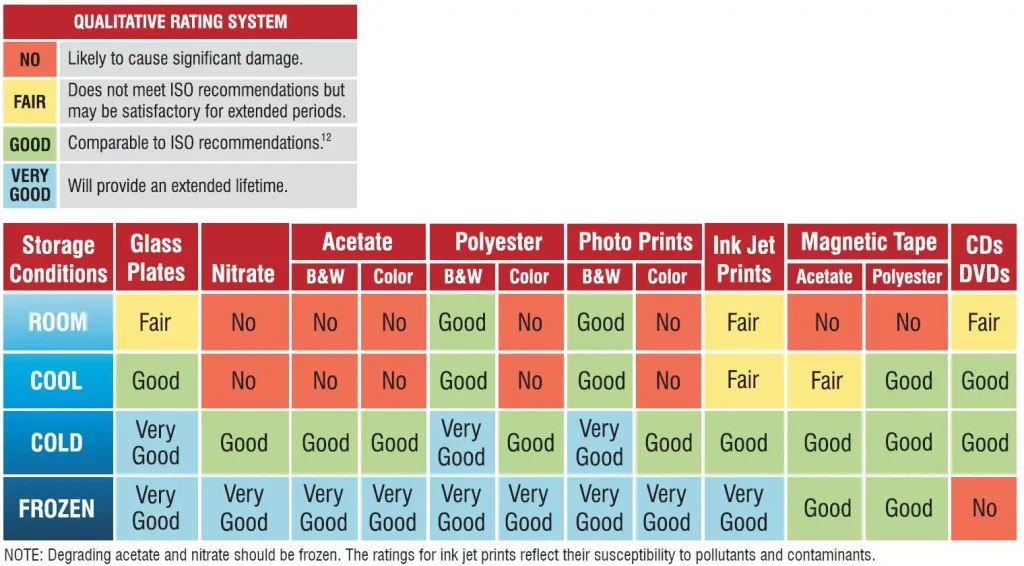It has (much) better archival qualities. That’s it. That’s why it’s so great. The rest of the article just expands on that idea.
Assumptions
I am implicitly assuming you agree that being concerned about the archival quality, longevity, permanence, lifespan (or however else you might call it) of film is something worthwhile – at least to some extent. I initially wanted to argue why I think that one should care about the permanence of film, but I soon realized this endeavor would get highly philosophical and would detract from the overall purpose of the article. The issue of why would be worth its own separate article. Nevertheless, I think I’m making a fairly safe assumption.
Surely, there are kinds of people who would throw away their negatives immediately after scanning them without giving it a second thought, but most are not among them. To add to that, nowadays shooting film is a very intentional choice; in the era of digital photography, one does not shoot film because he or she merely wants to do photography, one shoots film because he or she wants to do film photography. It seems plausible that the photographer would have some sort of concern over the fate of the medium, in addition to the concern over the final image and/or the shooting experience.
Film structure
I think we should start with a very basic description of film structure; keep in mind this is an oversimplification. The main components of black & white or color film are the base layer and the emulsion. The base layer is essentially some kind of plastic and acts as a support for the emulsion, which is what actually reacts to light and gives us an image. The emulsion for black & white film is made up of silver halide crystals suspended in gelatin. The exposed silver halide becomes metallic silver during development and creates the silver image. Color film emulsion contains color couplers suspended in gelatin in addition to silver halide, which allows for the formation of dyes during the development process. Those resulting dyes create the dye image.
Film bases
There are three main categories of film bases: nitrate, acetate, and polyester. Nitrate (aka cellulose nitrate) film is the oldest type and it’s not used anymore since it has inferior archival qualities and, most importantly, it’s highly flammable.
Acetate (aka cellulose (tri)acetate) film is, unlike nitrate, not flammable, which makes it the material of choice for most film manufacturers today. Fujicolor C200, Kodak Gold, Portra 400, HP5+, Tri-X, and many other popular films use acetate as their base. Unfortunately, the acetate base also degrades over time – through a process known as vinegar syndrome, which makes the film shrink and become brittle. Its name is quite suggestive since the process involves the release of acetic acid (dilute acetic acid in some water and you get vinegar).

When looking at the deterioration of acetate film, an important threshold is the free acidity level of about 0.5 – the autocatalytic point. The autocatalytic point is the point of no return, after it is reached the deterioration process speeds up dramatically and can no longer be stopped, only slowed down. However, at this free acidity level, the film is still perfectly usable; severe deterioration may not occur until free acidity levels of 5 to 10 are reached.
The rate of deterioration of acetate film bases is highly dependent on two main factors – relative humidity (RH) and temperature. For the most part, the lower, the better, as long as the RH is not too low (under 20%). A fair bit of research was done during the second half of the 20th century on the properties and permanence of photographic film, especially by the Image Permanence Institute (IPI) – thanks to this we now have access to predictions for the lifespan of film. In the figure below you can see how much time it takes acetate film to reach the autocatalytic point, depending on temperature and RH. These predictions are not gospel, but they should give you a rough idea of how different storage conditions affect the life expectancy of film. Polyester film (aka polyethylene terephthalate or PET) is more chemically stable than either nitrate or acetate, and more tear-resistant. It deteriorates at a much slower pace than acetate film given similar storage conditions, five to ten times slower according to the IPI. For fairness, I should mention two small disadvantages of polyester film. Due to the risk of light piping, it should be loaded in subdued light. Additionally, if you are scanning your own film, you might find it harder to cut compared to acetate film.
Polyester film (aka polyethylene terephthalate or PET) is more chemically stable than either nitrate or acetate, and more tear-resistant. It deteriorates at a much slower pace than acetate film given similar storage conditions, five to ten times slower according to the IPI. For fairness, I should mention two small disadvantages of polyester film. Due to the risk of light piping, it should be loaded in subdued light. Additionally, if you are scanning your own film, you might find it harder to cut compared to acetate film.
Black & white vs color
So far, we have talked exclusively about what happens to the film base, but the gelatin, the silver image (for black & white film) and the dye image (for color film) also deteriorates. The longevity of photographic film is as good as its weakest component.
The gelatin can be affected by mold growth and the action of pollutants, both of which are facilitated by high RH. On the other hand, a very low RH can cause the gelatin to become brittle. Pollutants can also lead to fading in both silver and dye images, with RH acting once again as a facilitator. The acetic acid generated by vinegar syndrome in acetate film can speed up the deterioration of some color dyes as well.
One important difference between black & white and color film is that, while the fading of color dyes is heavily influenced by temperature, it represents only a limited factor in the fading of silver images. Another merit of black & white film is that silver image degradation can be prevented through the use of image stabilizers (like this one) or toners (like this one).
Standards
Based on the multiple considerations we mentioned so far, the ISO 18911 standard for photographic film has been developed. The IPI has also offered some recommendations depending on the base material and the emulsion.

As you can see in the table above, storage conditions that would be deemed unacceptable for acetate film, are acceptable for polyester film. While many of us (especially those living in colder climates) may be able to store our film at room temperature year-round – which is perfectly reasonable for black & white polyester film – meeting the temperature requirements for acetate film would probably require investing in some sort of controlled environment.
Conclusions
Truth be told, most of us don’t have the interest, the time, or the means to keep our film in optimal conditions, which is why polyester film might be a wise choice. If you invest in a product and know it’s going to take a lot of abuse, you might just as well buy the heavy-duty version.
If one wishes to get the type of film that will withstand the test of time the best, black & white polyester film would probably come up on top. If you’ve already decided on polyester, going for black & white is not exactly a hard choice, since most of the polyester film on the market is black & white anyway. You would really have to go out of your way to buy a color polyester film.
Why most manufacturers use acetate instead of polyester I cannot say for sure; there could be many factors one outside the industry wouldn’t consider. Higher cost of polyester may partly explain it, as some sources suggest, although it seems unlikely considering we use polyester for disposable bottles and bags nowadays. There are also some issues with the use of polyester film in the motion picture industry (all currently available Kodak motion picture film is acetate), but they are not really a concern for the photographer. Perhaps polyester film could damage minilab machines if it happens to get jammed – due to its tear resistance.
Resources
If you’re interested to try (or re-try) polyester film and don’t know which films have a polyester base, you might find this list useful. You might notice it’s common for some manufacturers to use a polyester base for medium format and an acetate base for 35 mm, although the emulsion is the same. In case you want to look up a film that’s not there you should see the base material mentioned in the technical sheet (if you’re lucky enough to find one).
Much of the information for this article has been taken from the IPI Storage Guide for Acetate Film – an accessible and fairly detailed introduction to film preservation (not only acetate). The references section is especially useful if one wishes to dive deep into the subject. For those interested to know more about the fading of dyes in color film, there is another guide for that.
Note: Ironically, the negatives in archival sheets from the featured image have an acetate base.
Share this post:









Comments
Kurt Ingham on The Benefits of (B&W) Polyester Film – By Emanuel Hentes
Comment posted: 30/01/2022
I used a lot of 2475 recording film in my early days of Rock Photography. Estar based and made for surveillance (the data sheet referred to the subject as 'the suspect').
The most miserable stuff to print on a humid summer night with a deadline. Did NOT want to lie flat!
Comment posted: 30/01/2022
Bill Brown on The Benefits of (B&W) Polyester Film – By Emanuel Hentes
Comment posted: 30/01/2022
In the 4 decades I've been at this I have experienced film instability and color degradation on three film stocks(all stored in Print File preservers from day one). In b&w I have rust colored spotting that has occurred on Ilford FP-4 and HP-5 developed in the late 1970's and early 80's. I contacted Ilford but got no response back. In color there has been considerable color shift in Fuji 200 speed negative film. A close friend who had worked in the r&d department at Polaroid told me he had a large amount of Fuji color negative stock become completely unusable so if I had any in my archive I should get it scanned immediately. Thankfully I have less than 10 rolls ever shot, from the 1980's. When I had it scanned it was quite difficult to get a usable color print.
The bulk of my archive is Kodak stocks(both b&w and color) and so far those have all remained okay. I know many folks are saying they will be switching to Ilford products because of cost considerations currently but there is more to consider than cost. Obviously, one persons experience does not mean much in the grand scheme of things but for me I'm going with what has worked for me. The first professional photographer I worked for in the late 1970's was an archival zealot and he was close friends with Henry Wilhelm. Mr. Wilhelm now heads one of the most widely acclaimed archival testing facilities in the states. Longevity and archival stability does matter.
Thanks for writing about the elephant in the room.
Comment posted: 30/01/2022
Dan Castelli on The Benefits of (B&W) Polyester Film – By Emanuel Hentes
Comment posted: 30/01/2022
People who survive me shouldn’t be burdened with my ‘archive.’
I’m not kidding.
Comment posted: 30/01/2022
Vincent Henriksen on The Benefits of (B&W) Polyester Film – By Emanuel Hentes
Comment posted: 30/01/2022
Comment posted: 30/01/2022
Martin JONES on The Benefits of (B&W) Polyester Film – By Emanuel Hentes
Comment posted: 30/01/2022
Comment posted: 30/01/2022
Nicole on The Benefits of (B&W) Polyester Film – By Emanuel Hentes
Comment posted: 31/01/2022
Lee on The Benefits of (B&W) Polyester Film – By Emanuel Hentes
Comment posted: 31/01/2022